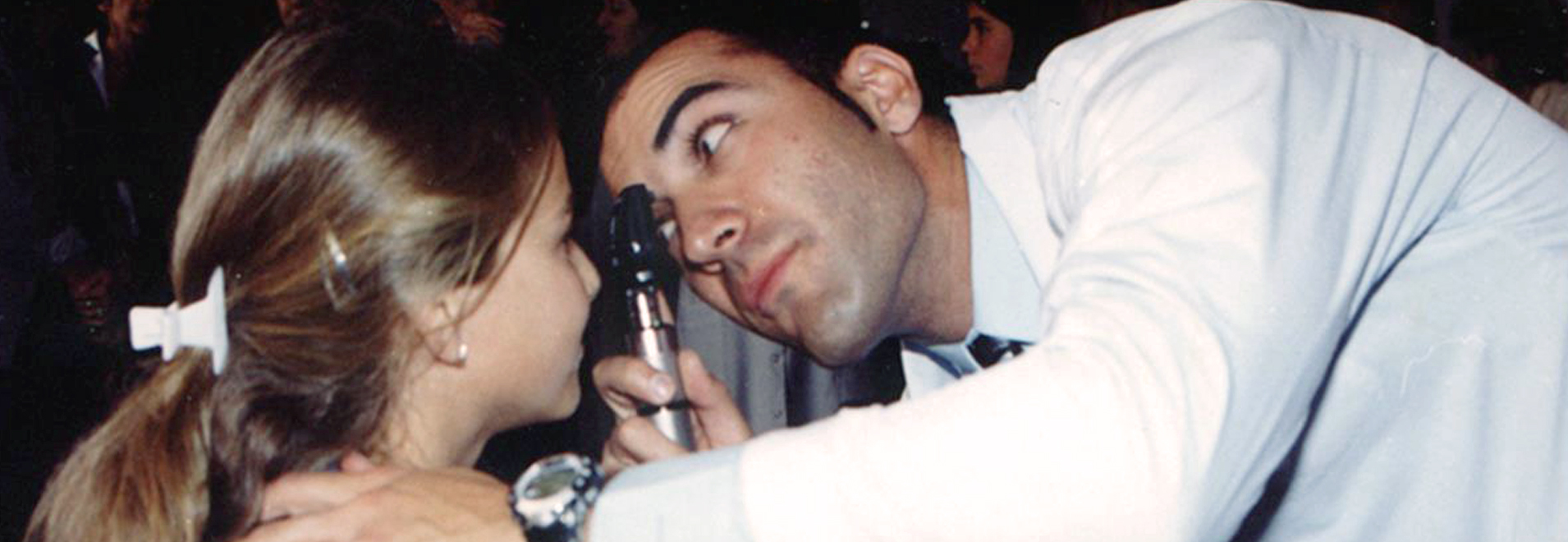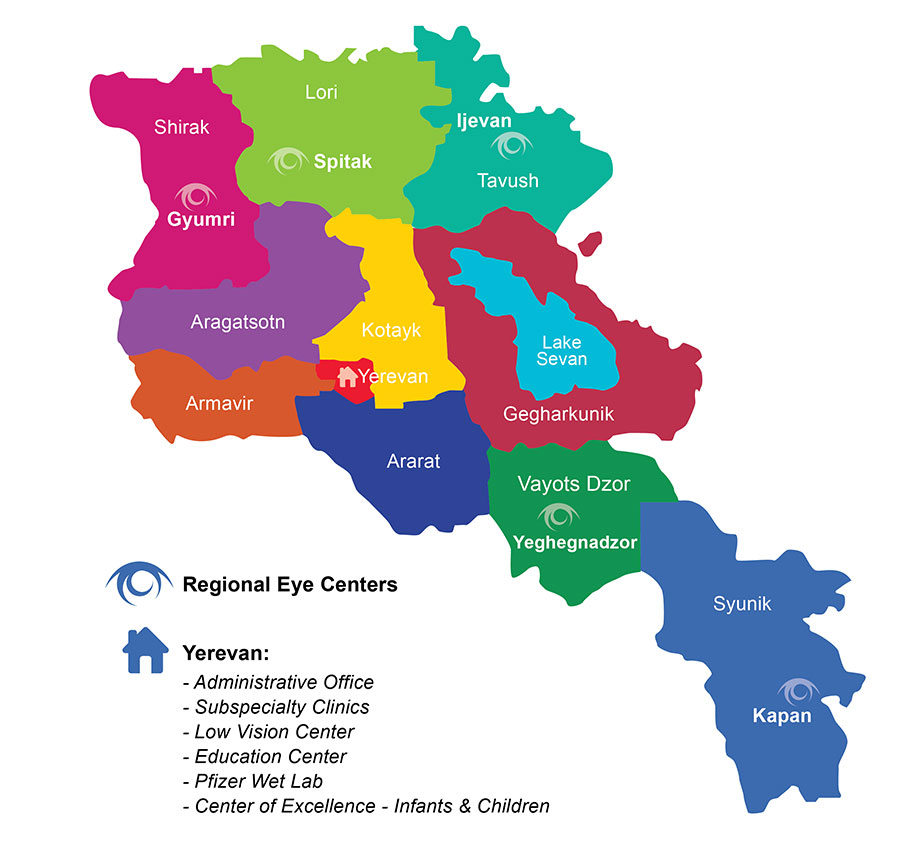In His Own Words
My name is Michael Kapamajian and I’m a graduate of the University of California Los Angeles (UCLA) School of Medicine. Over the summer of 2004, I was enrolled in an “away elective” in ophthalmology at the University of California, Irvine (UCI.) During this four-week rotation, an attending physician and I engaged in several conversations, one of which revealed my Armenian background. Upon learning this, he immediately asked if I had ever heard of the Armenian EyeCare Project, to which my answer was a dry “No.” He mentioned that some of the ophthalmologists at UCI were planning on going to Armenia with the AECP in the fall and asked if I would be interested. Upon receiving my affirmative response, he put me in contact with Dr. Roger Ohanesian, founder of the AECP.
Forward to October 2004: An email Dr. Ohanesian sent me reads, “Meet me at the airport. I’ll be the guy with white hair, a black shirt, and gray pants.” (Bear in mind he also had my tickets!) About five minutes before the plane departed, I finally saw a man come to the terminal and, I must say, although his description was accurate, he carried an aura of dignity that gave him away before his self-description ever could.
On the plane, where I was planning to relax, I quickly learned (to my dismay) that this was not going to be the vacation I had planned it to be. Dr. Ohanesian came over to my seat, showed me some statistics about eye disease in Armenia, briefly went over the goals of the AECP, and then asked me to come up with a curriculum to train doctors. I was confused; he was amused. He then gave me the patented “eyebrow” and walked to his seat, while I, completely lost, took the pen and pad he handed me and started to jot down ideas regarding a training curriculum. The advantage, of course, was that this did make the trip seem short.
The next morning we immediately got to work. Nune, In-Country Director of AECP Armenia, and Dr. Ohanesian sat down and explained to me that because roughly 70 percent of visits to family practitioners out in the Marzes were eye-related, the AECP planned to create a training module to educate these physicians to become competent in eye care. That way, less complicated cases could be managed in the Marzes, while more serious ones would properly be referred to Yerevan’s Malayan Ophthalmological Center (MOC.) Hence the “curriculum” Dr. Ohanesian had asked me to come up with on the plane… “Oh, now I get it.”
With a clear idea of what I was supposed to do, I set to work and came up with a curriculum that was very well received by the members of the AECP. In addition to this, I mentioned the idea of bringing over a program similar to one that I was involved in through the Jules Stein Eye Institute at UCLA called the VISION Program. As a member of the VISION Program, we would travel to elementary schools in the community and teach fourth and fifth grade students about the eye, how it works, and proper eye care and eye safety, followed by a dissection of a cow’s eye.
Despite the educational benefits of learning from patients with far progressed disease pathology, I felt that something should be done to prevent patients from getting to this point. Of course, the AECP was already on top of this… behold, the Mobile Eye Hospital (MEH.) I quickly learned that the MEH was a huge 18-wheel eye hospital, fully equipped with two screening rooms, complete with slit lamps and foropters and one operating room, which, to the best of my knowledge, was up to par with those that I have seen here in the U.S. It really was an amazing accomplishment by the AECP towards better eye care in Armenia.
The village that the MEH was stationed at while I was there was Dilijan. The trip to Dilijan was full of breathtaking views and a great example of the drastic climate changes characteristic of Armenia; within a one-mile range the scenery went from a dry, rocky desert to a beautiful landscape full of greenery. I should add that the food in Dilijan, to this day, remains unsurpassed. You WILL NOT find a place here in America where the food can make you that happy; it was like the village cure for depression.
We also took a trip to an elementary school in Karagerd, where we took part in a vision screening program. Aside from screening the children’s vision, two things stick out in my mind when I think of that trip. One was the excitement of all the kids when they saw us and when they realized that our cameras immediately produced digital images on the LCD screens. The second was meeting a 12-year-old girl who had traveled to New York to raise money for her village by performing Armenian dances; she raised $1 million for her village, which to me, was amazing.
All in all, I was sad when the day came to leave, but I knew that I had established new friendships there and that the experiences would be a continual reminder of this beautiful place on the other side of the world to which I would soon return. Despite having embarked on this trip with Dr. Ohanesian and the AECP blindly, I returned with a vision of how I can contribute not only to the field of ophthalmology, but also to the people in Armenia.







